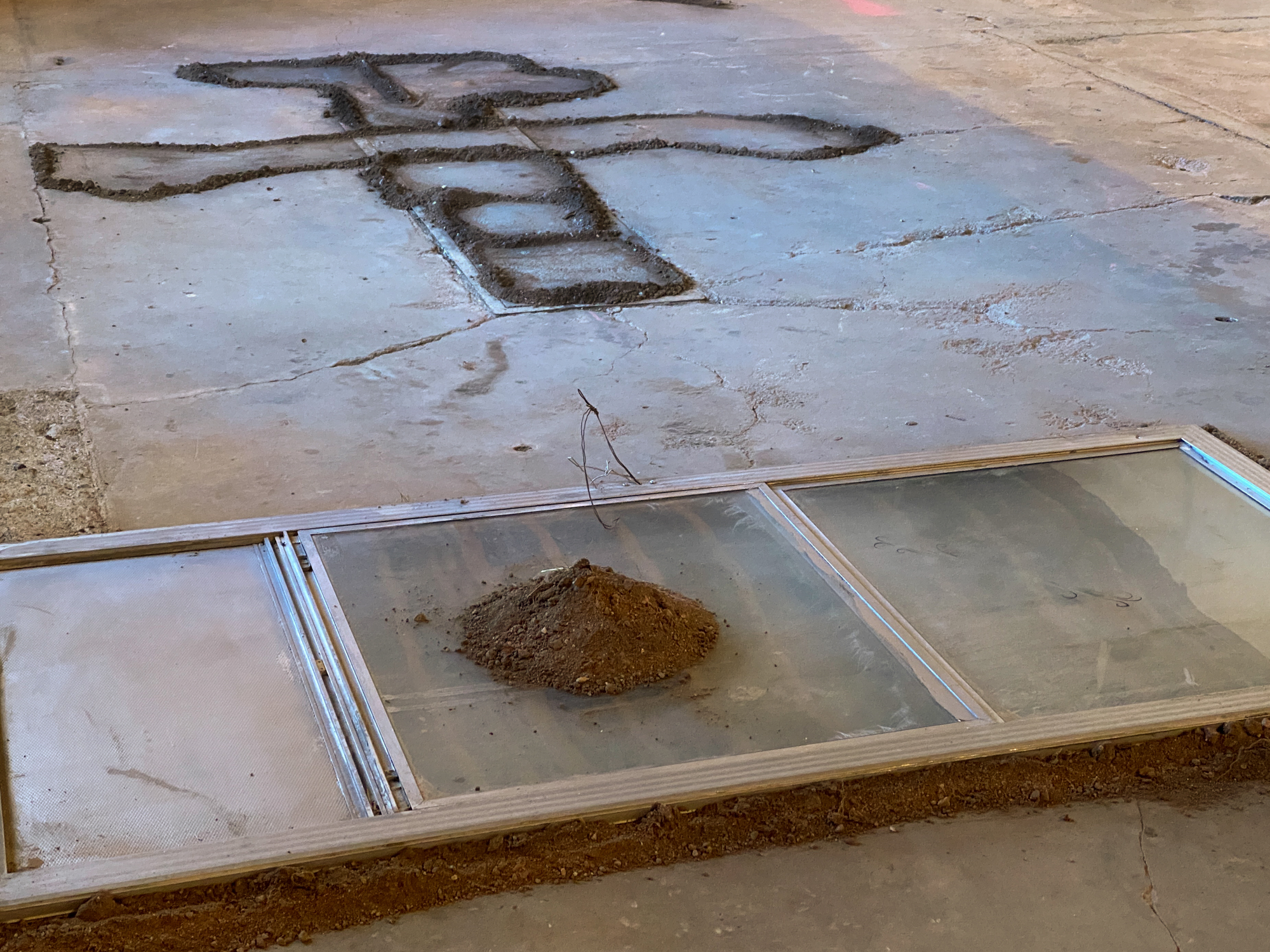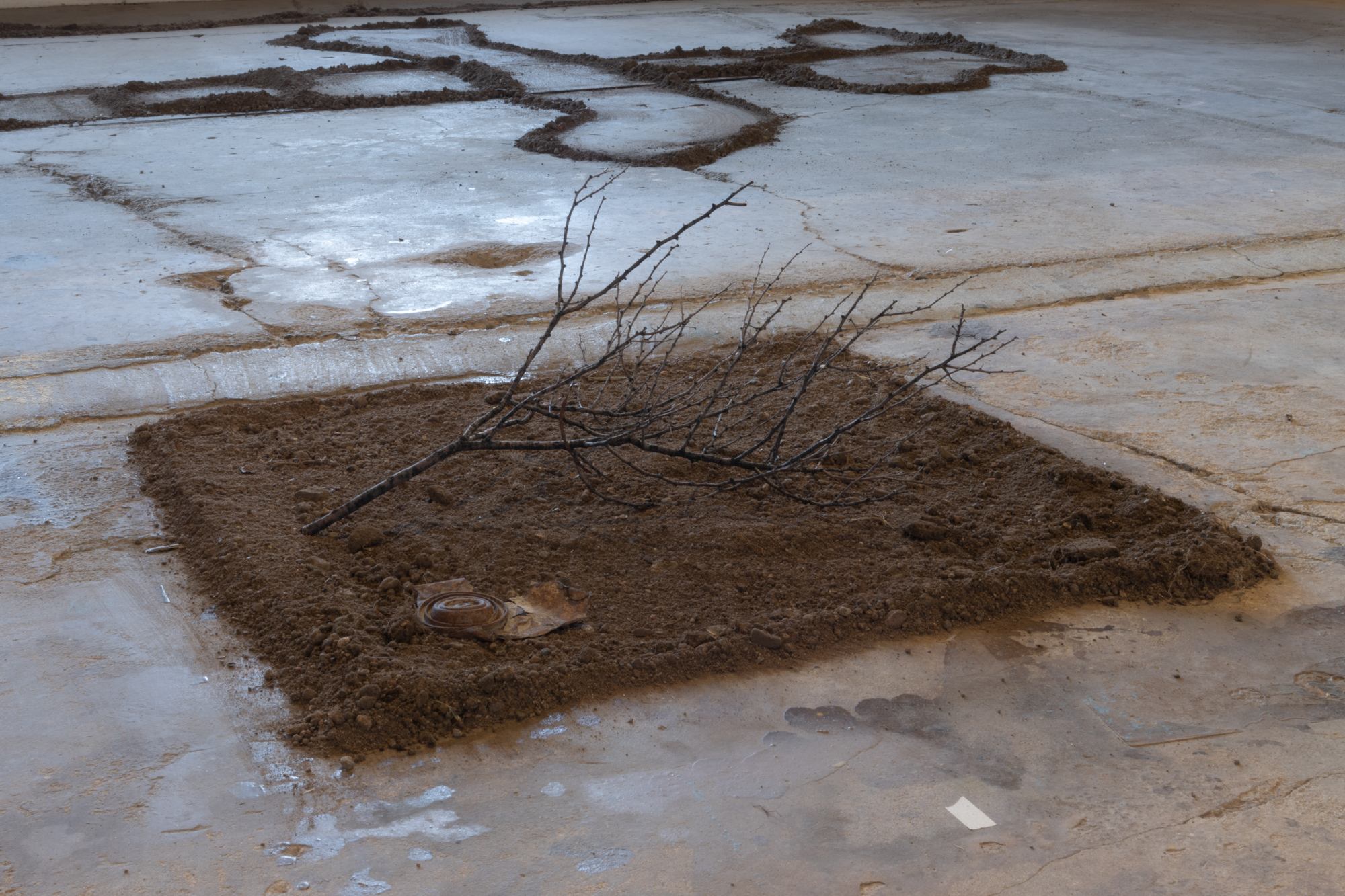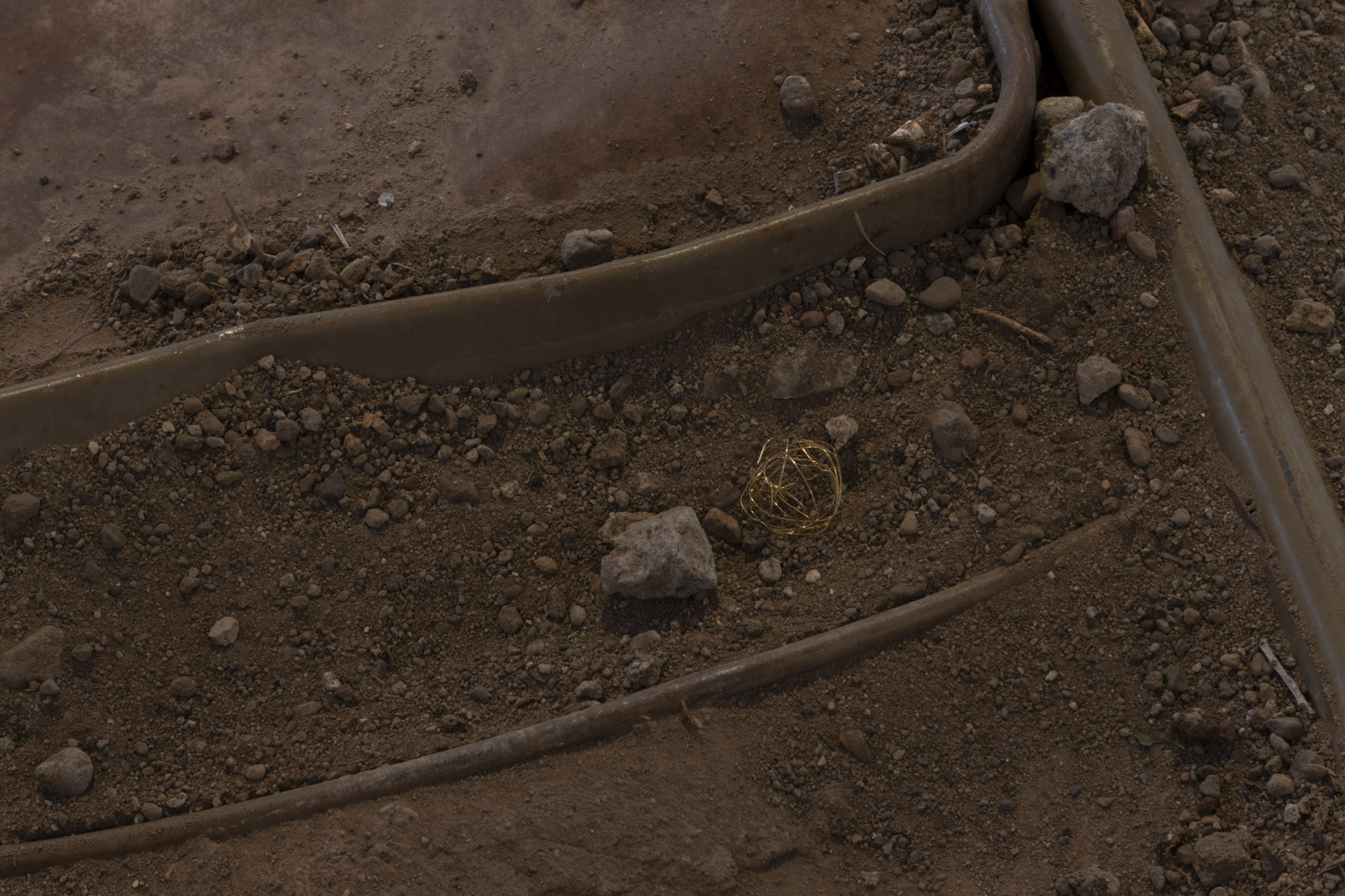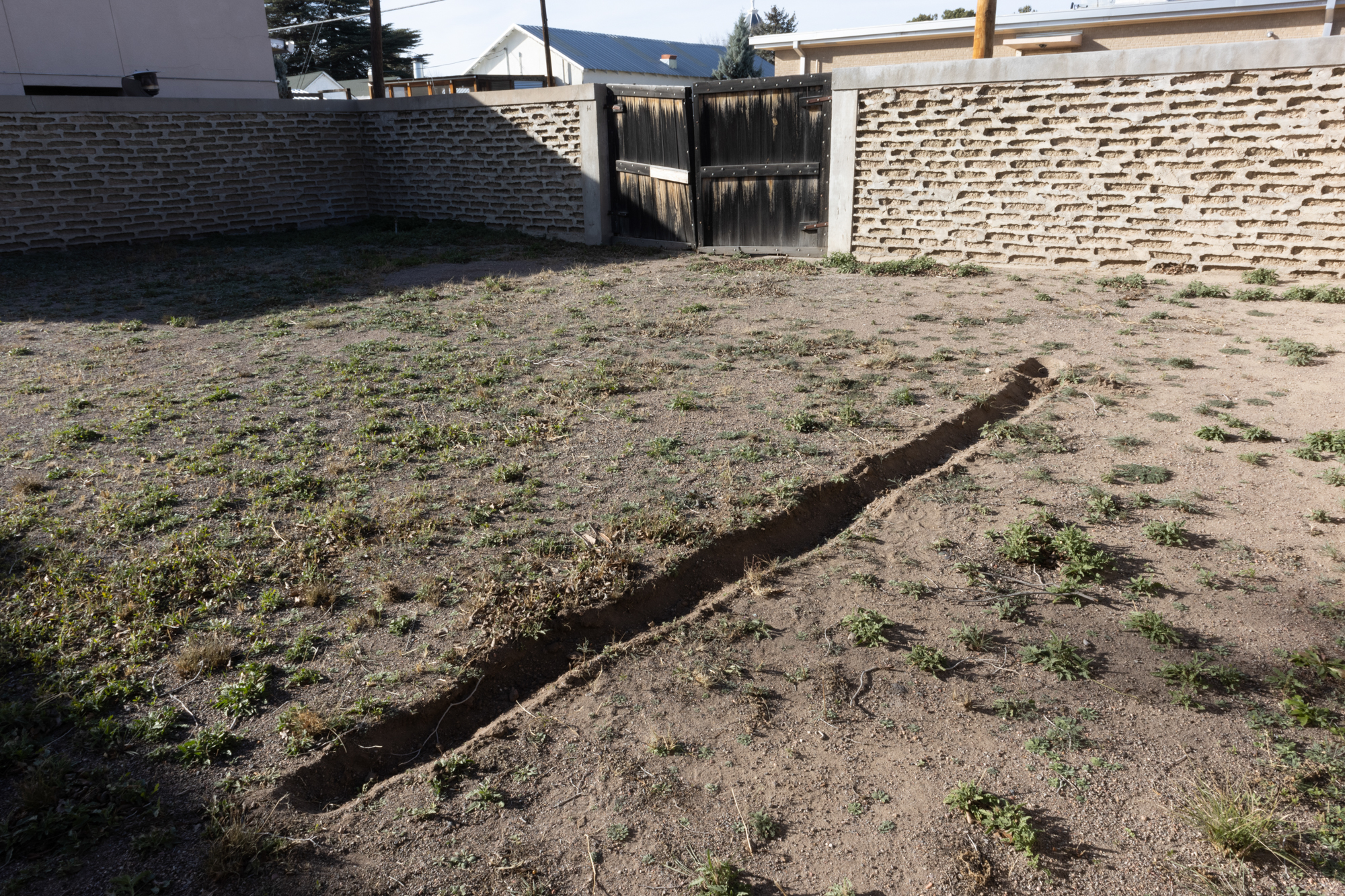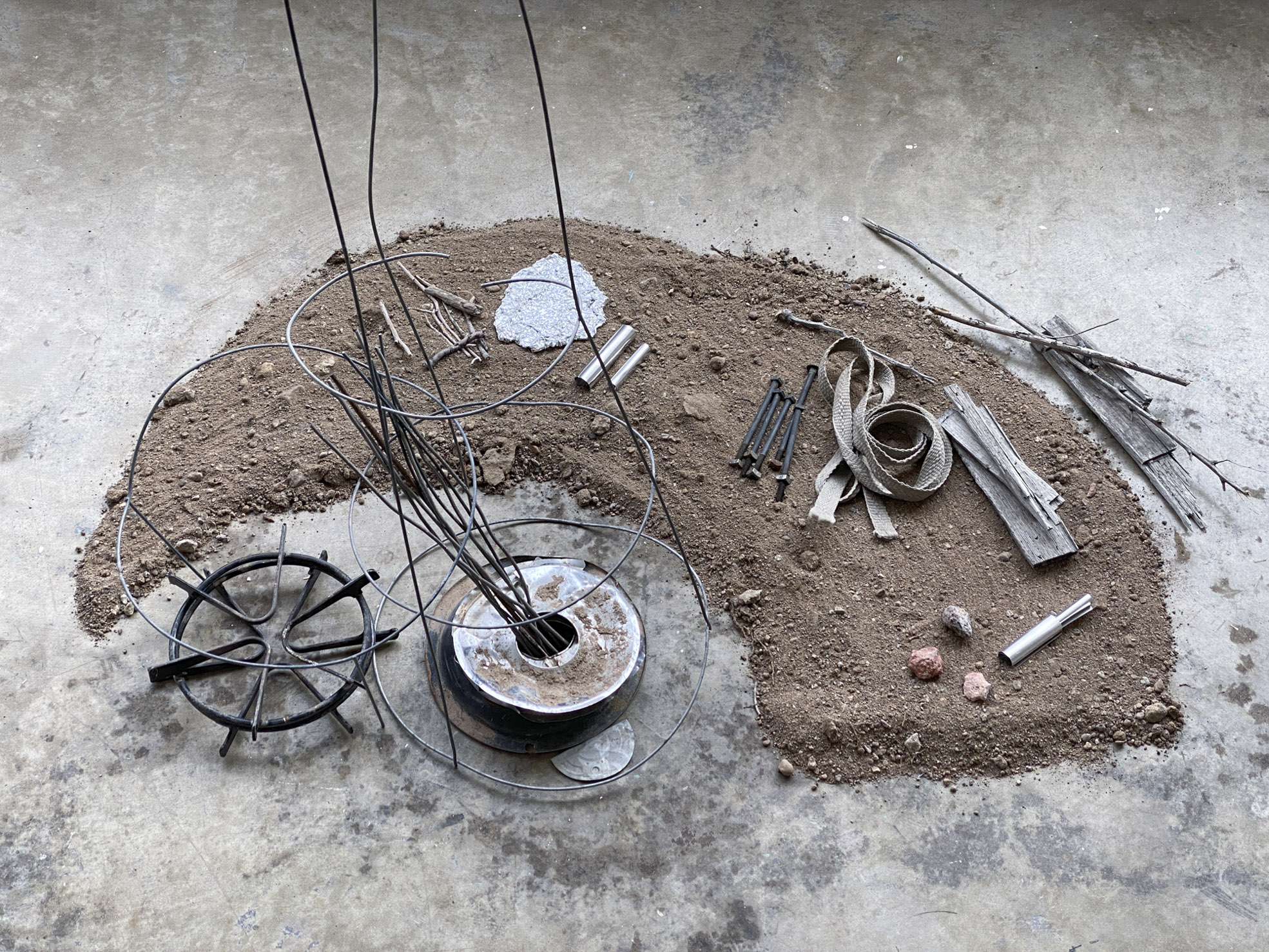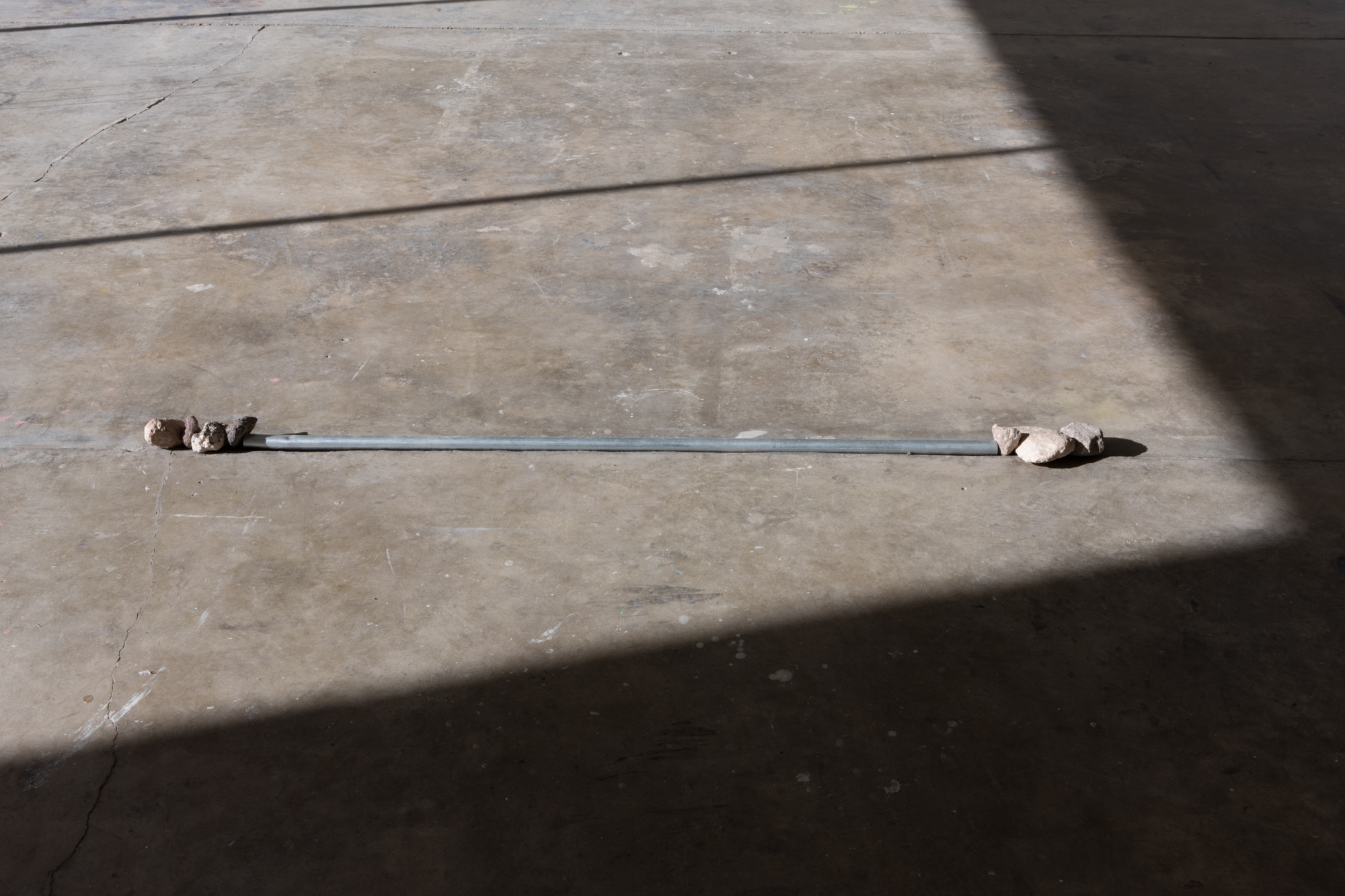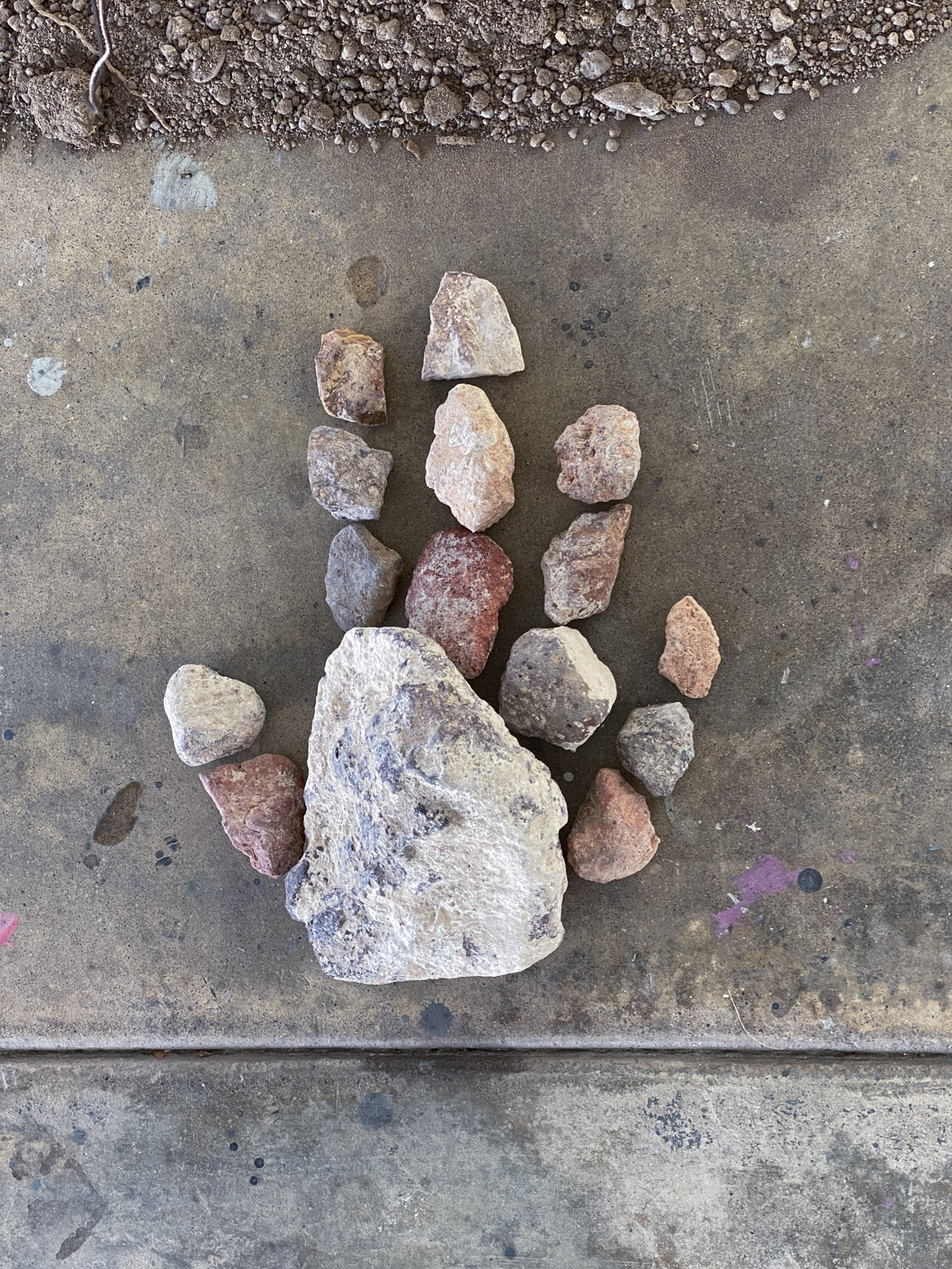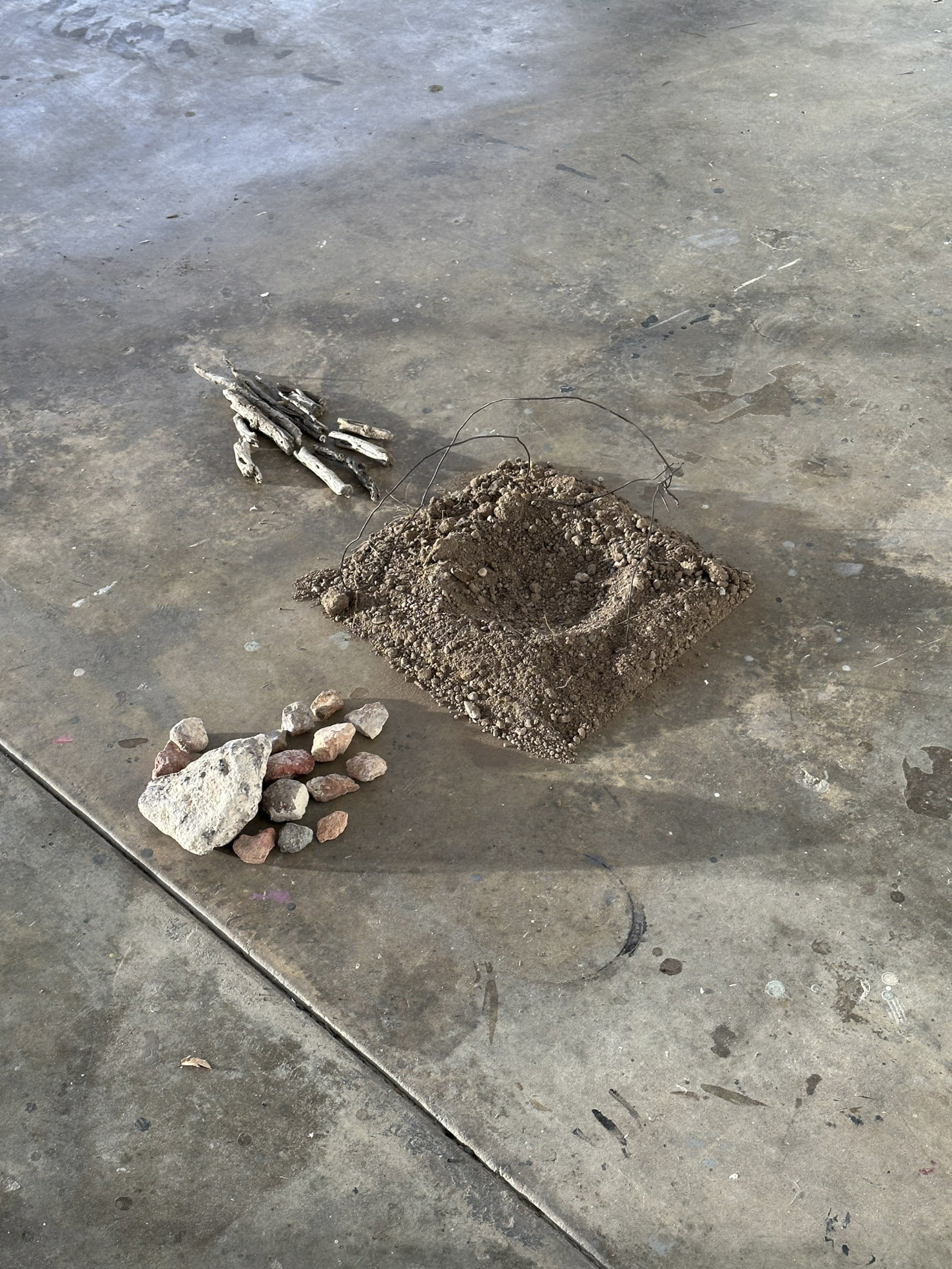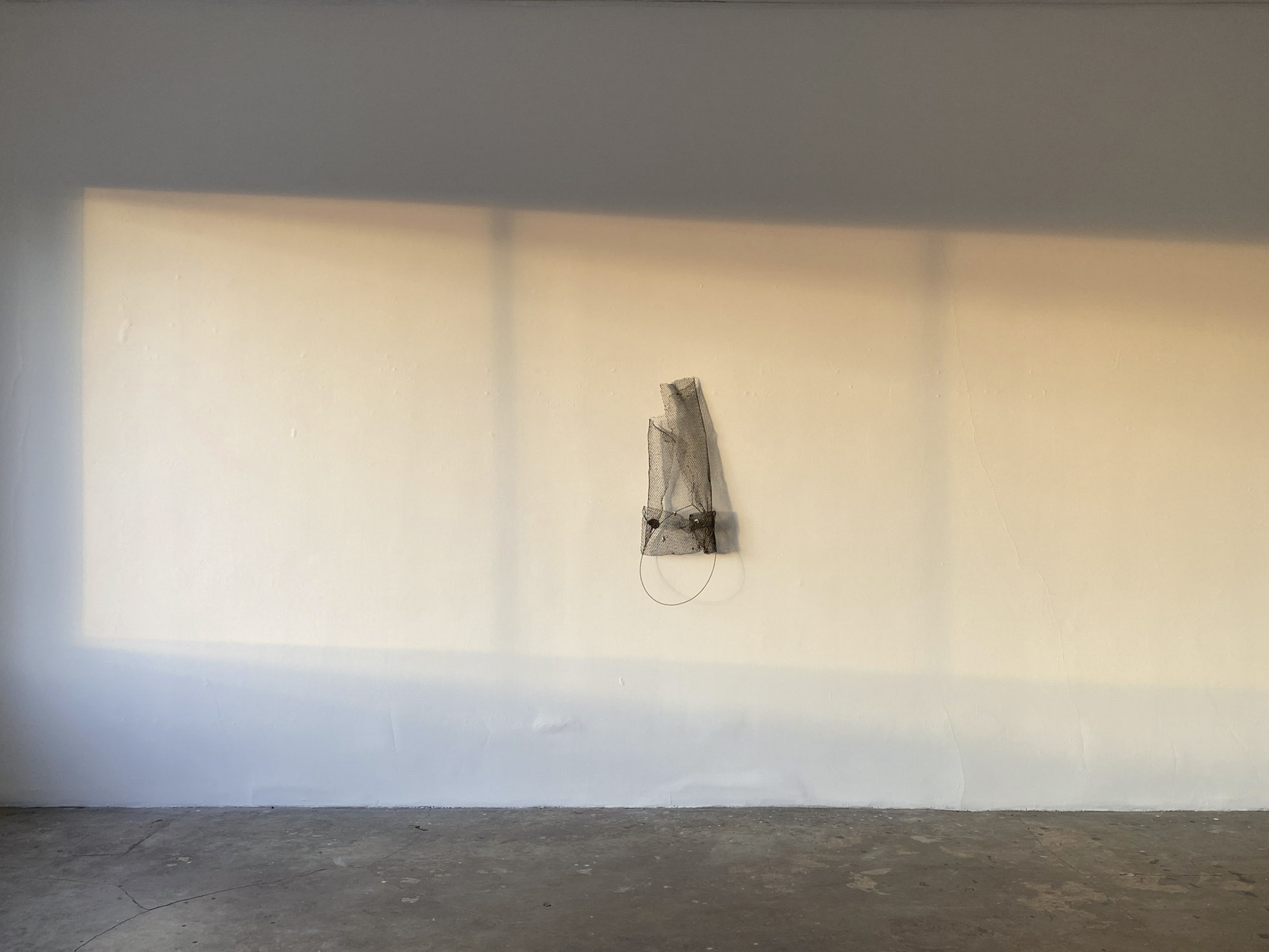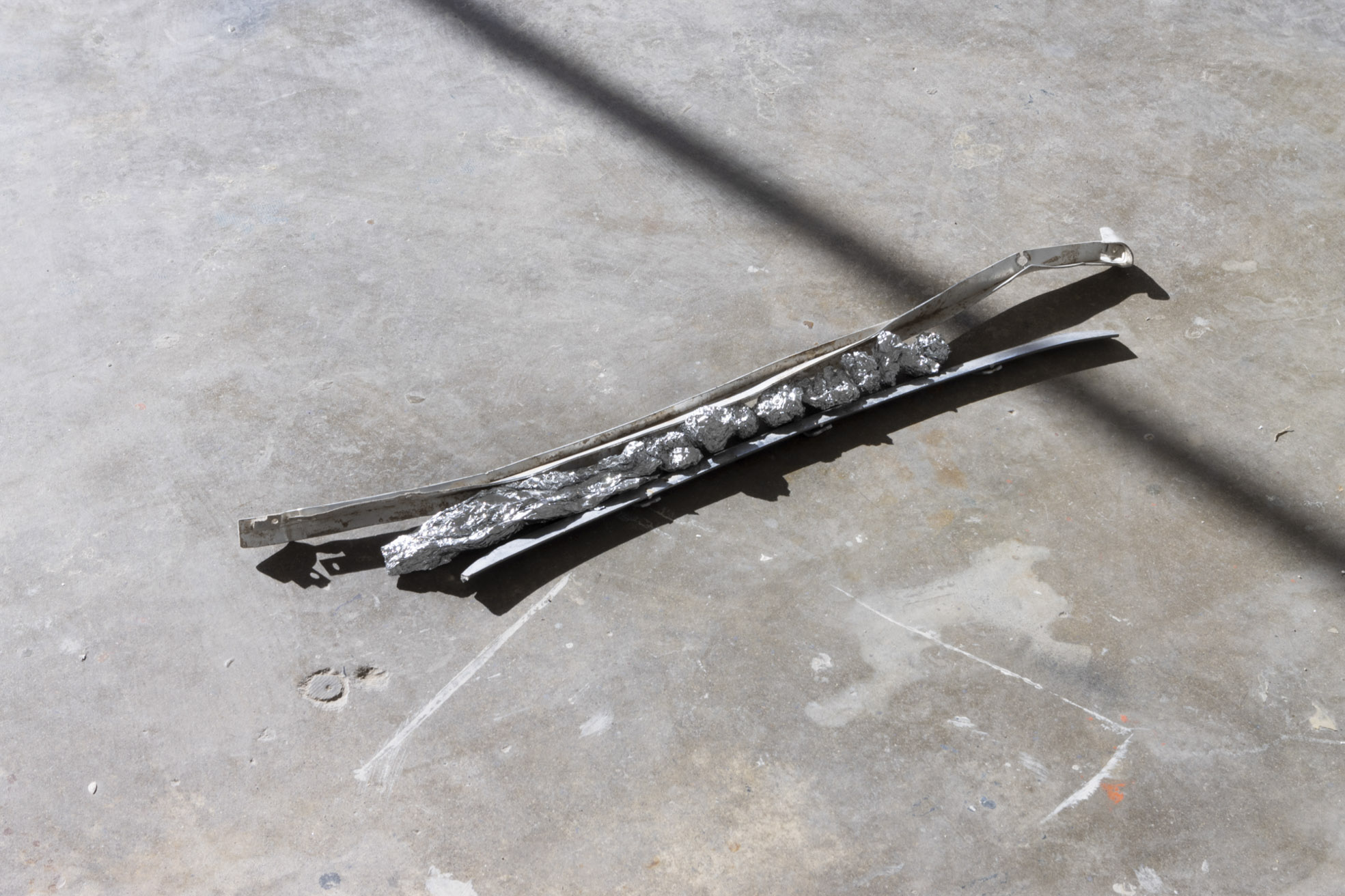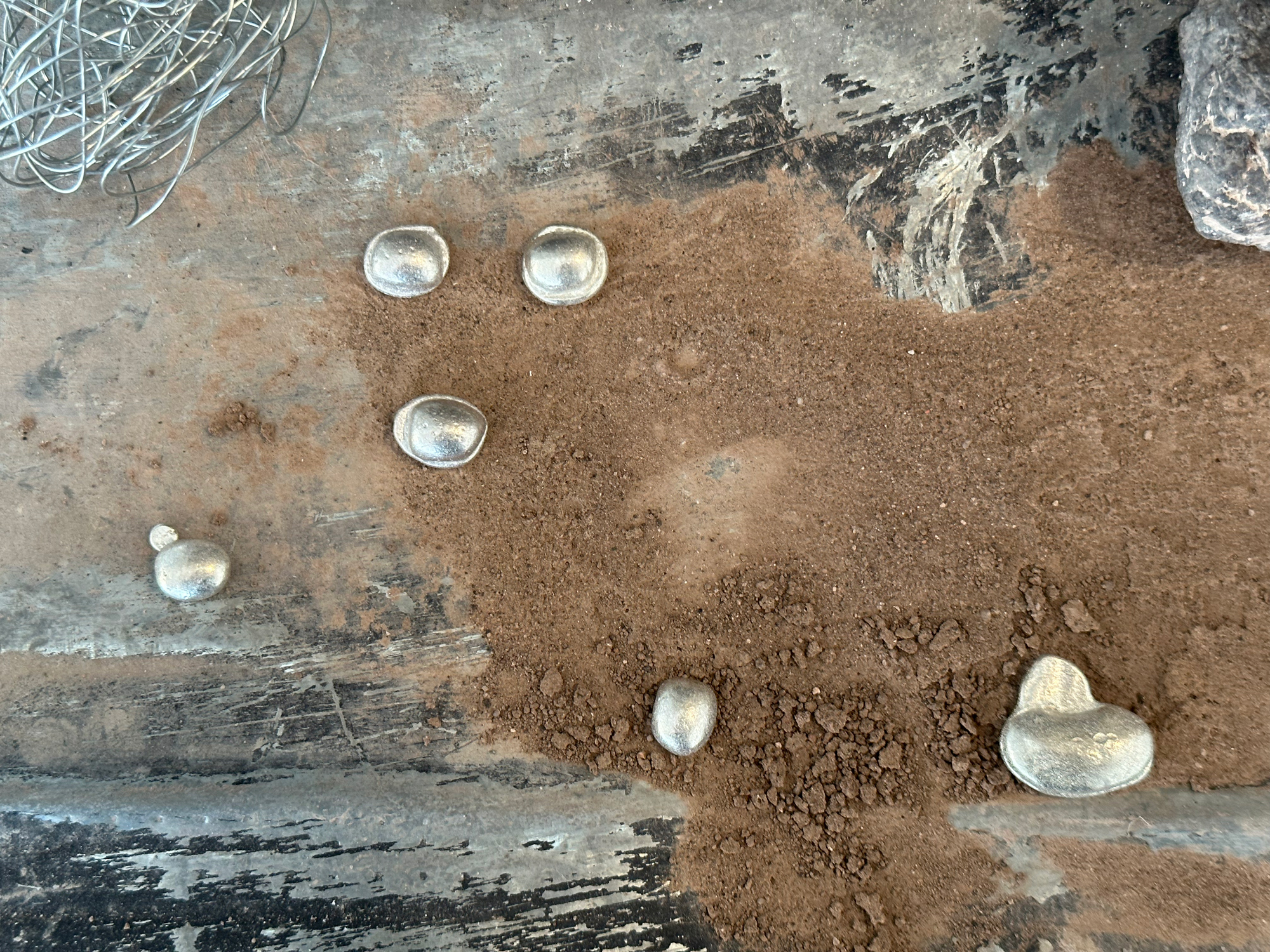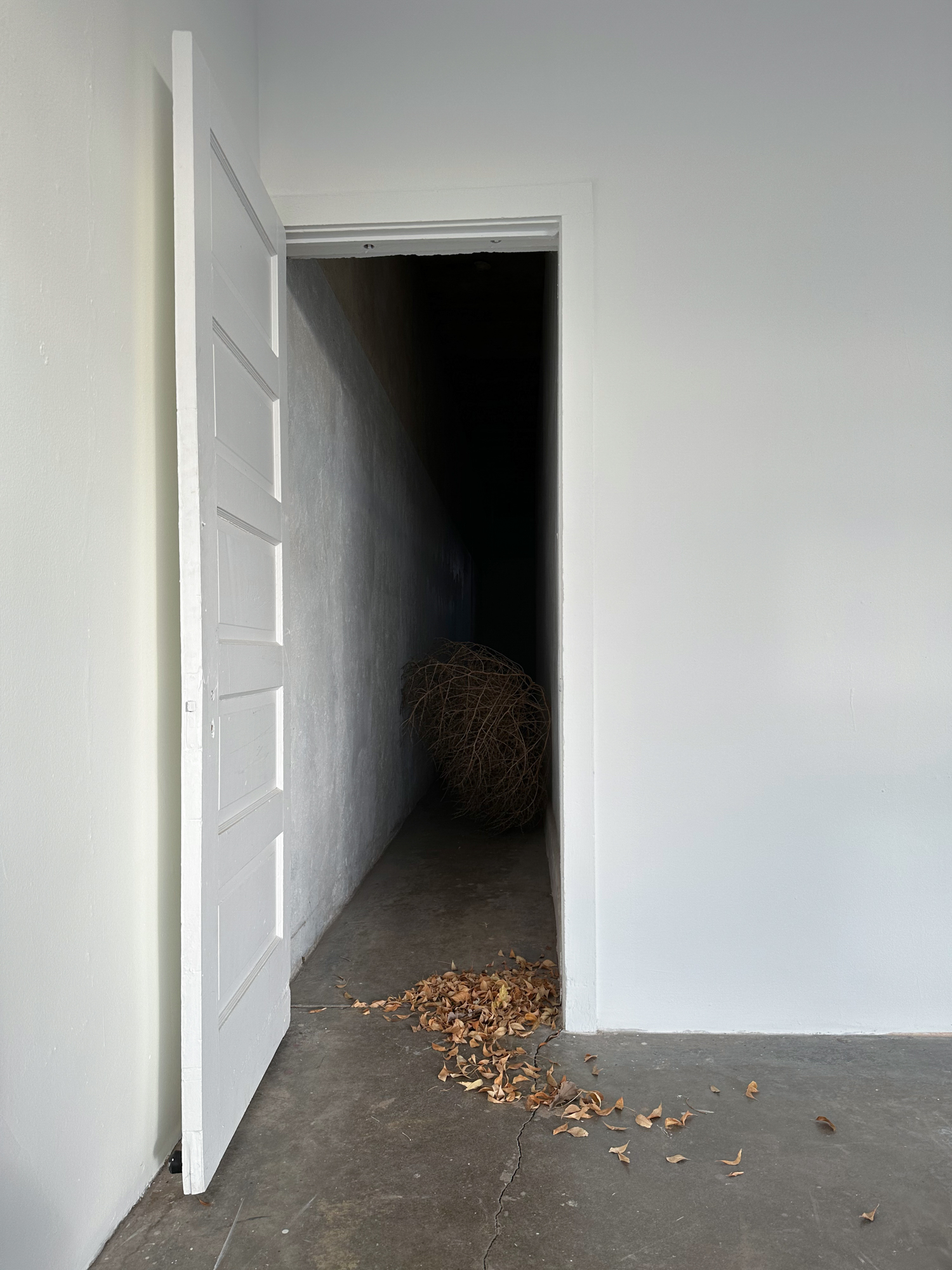Artist in Residence, Chinati Foundation, Marfa, TX
November – December 2022
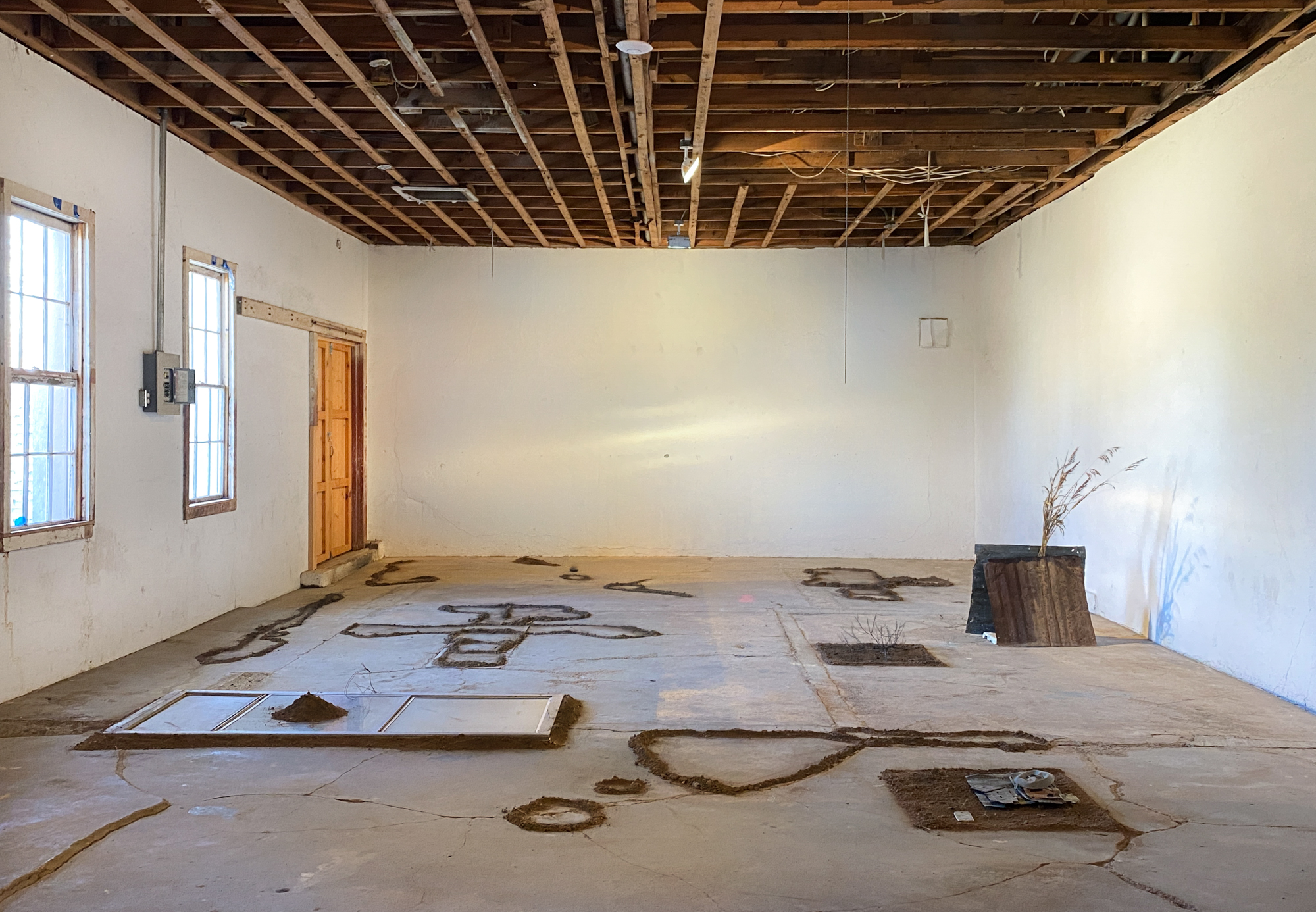

Anne Hardy says that she’s always wanted to work with dirt—a practical choice in Marfa, where dirt is hard to escape. The backyard of the Locker Plant studio is a patch of earth, enclosed by a wall of adobe bricks that functioned like a dirt frame for the indexical line that she dug, photographed, and filled. Lightening up her studio practice while she was here was another objective. Hardy arrived with no other materials than a handful of beans cast in pewter, leftovers from her recent exhibition in Rome.

FIELDworks is what Hardy calls the environmental installations for which she is renowned. With all the elements of theater save human actors, whose absence is experienced as a kind of residue, these works give presence to states of mind. Her 2019 commission for Tate Britain transformed the museum into a ravishing object of anxiety. By immersing the facade in an aurora of light, tattered drapery, and quadrophonic sound (creaking ice, flowing water, shore birds), Hardy’s intervention effectively cast the nearby Thames in the tidal role of performing nature’s resurgence in the wake of apocalyptic climate change.

At Chinati, Hardy turned the studio, with its various spaces, into an environment of shifting terrains. Digging around town and the surrounding desert, she created a palette of colors and textures of dirt: gritty grays, loamy blacks, clay-rich reds. She mounded, sprinkled, poured, swept. She formed glyphs and traced the cracks in the concrete floor. She picked up sticks, stones, bits of the wire ubiquitous to this ranching region, and junk from Marfa’s ever-miraculous source, the dump. She arranged, destroyed, composed, swept. She shaped a hand out of rocks that reminded her of knuckles and tucked the pewter beans, like pearls, into an assemblage of debris. She collected field recordings: snow melting on the roof of her apartment, bugs sounding alarm during an earthquake. When the end of her residency drew these processes to a halt, Hardy’s open studio was staged for people to discover art that was made to be swept away.

Ingrid Schaffner, Curator, Chinati Foundation

